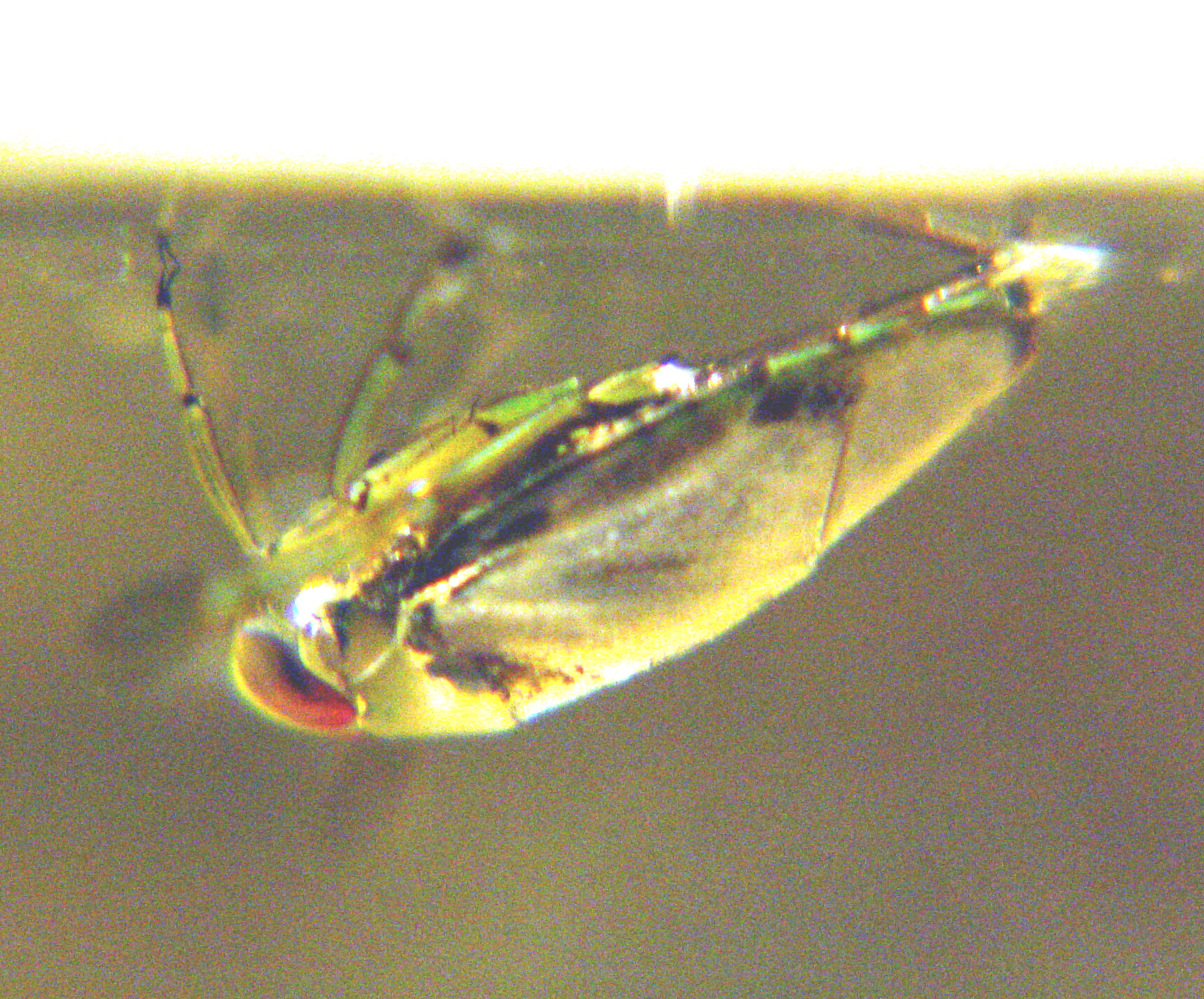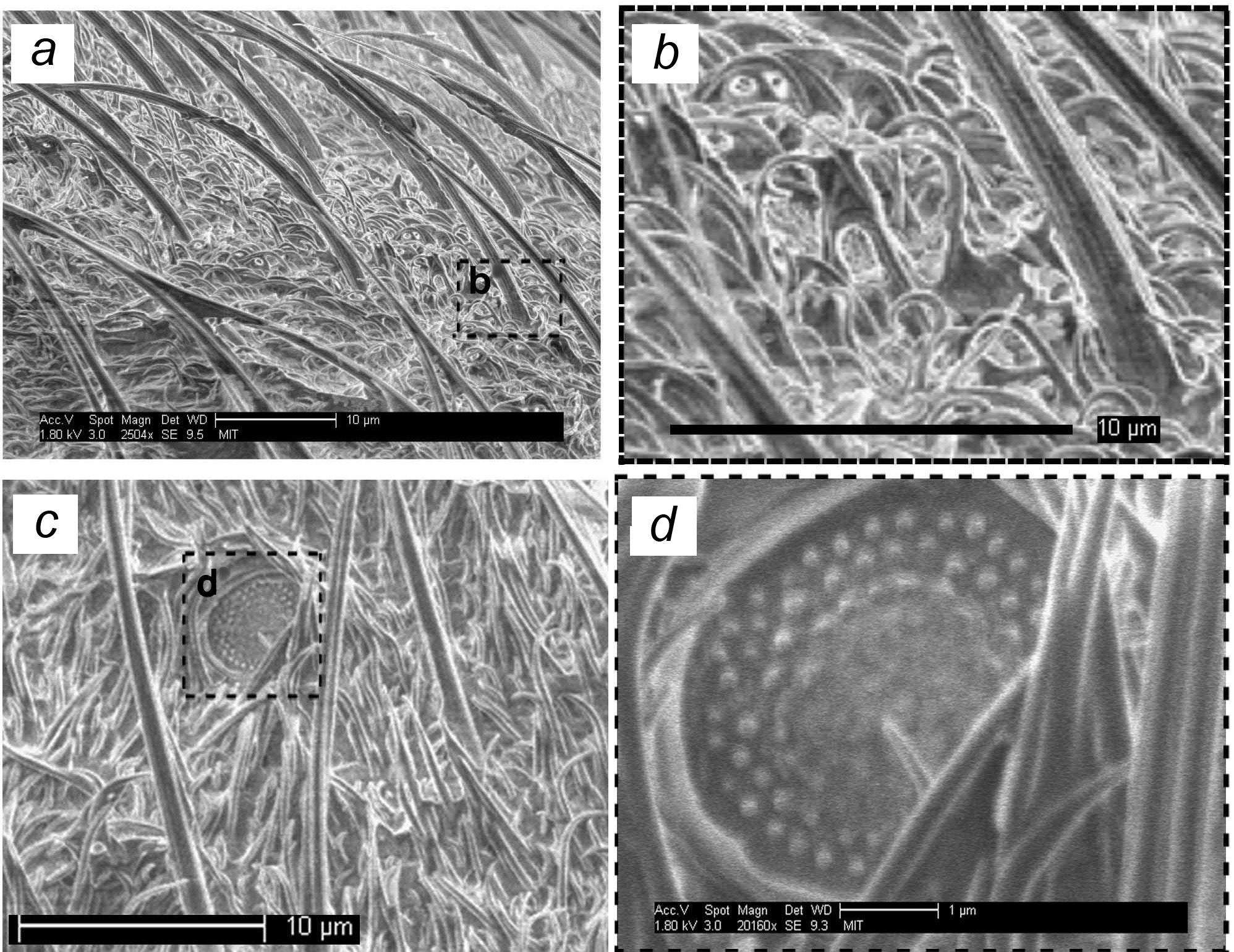
A submerged water boatman (Notonecta) hangs inverted from the water surface. Bubbles along the insect's thorax and head facilitate oxygen and carbon dioxide exchange with the water column and allow the insect to remain underwater for extended periods. (Photo credit: J.W.M. Bush).
